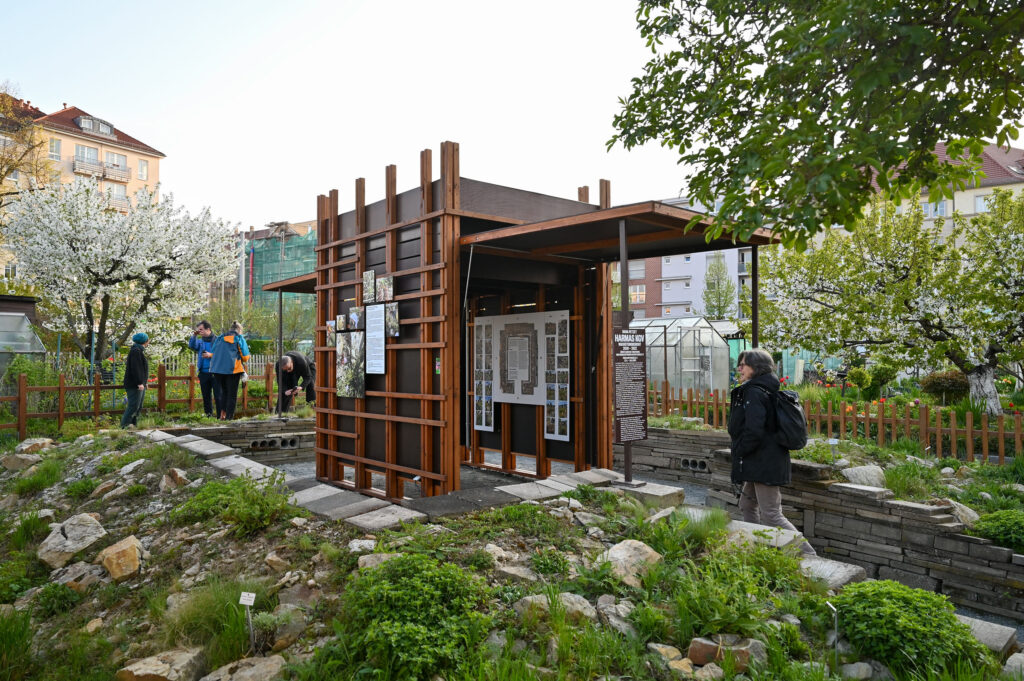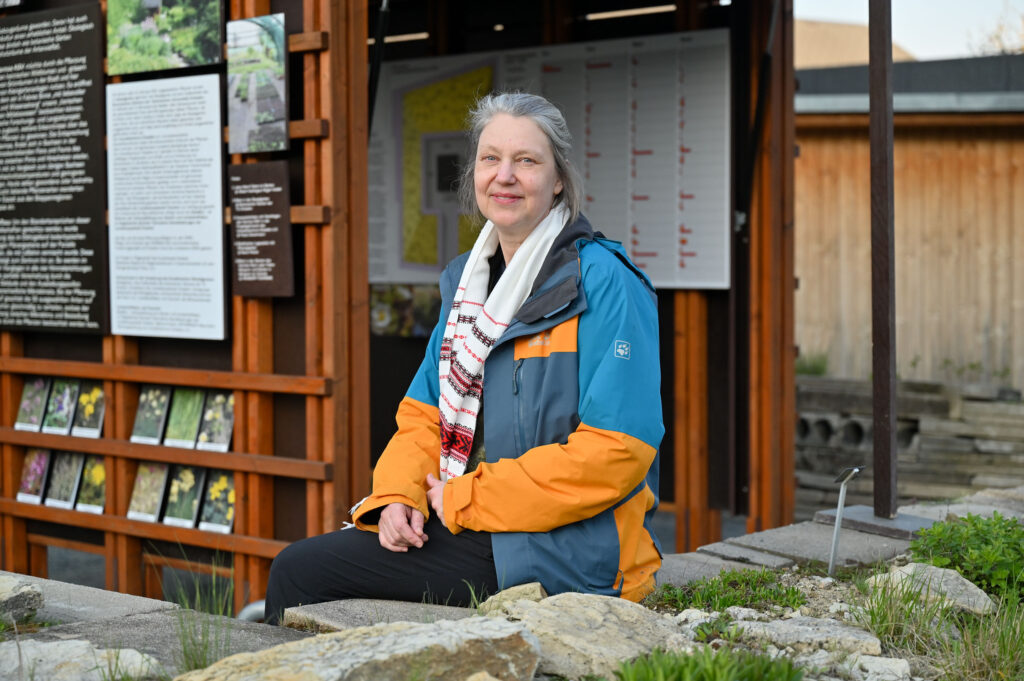Since 2019, the Kunsthaus Dresden has had a branch for artistic garden projects in a garden area, the allotment garden association ‘Flora I’ e. V. in Dresden-Striesen. Exhibitions and permanent site-specific garden art projects are shown in the open air.
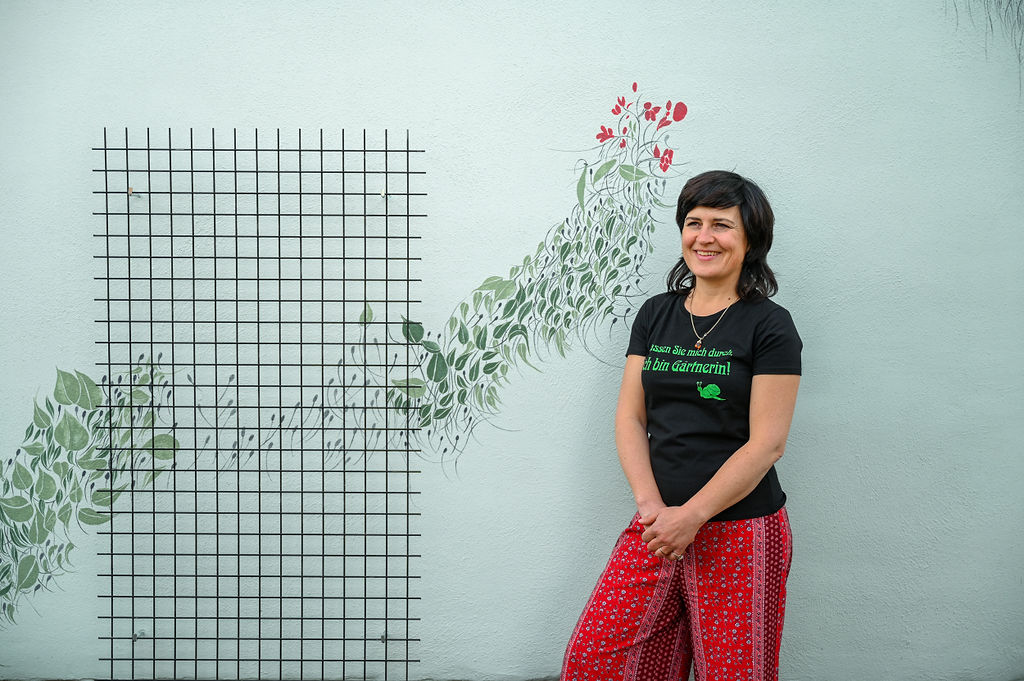
The »World Garden« show garden by the South Tyrolean artist was transferred from the Parzelle 3 2022 pavilion exhibition to Flora I as a permanent installation.
The exhibition »Api étoilé - A growing archive« conveyed the concrete visualisation and preservation of living cultural knowledge through video installations, small-scale drawings and a large-scale seed archive. For more information, please follow the link.
The plant boxes of the mobile »world garden« show old vegetables and various mixed cultures in which the plants support each other in their growth and defence against predators, for example a combination of tomato and cinnamon basil.
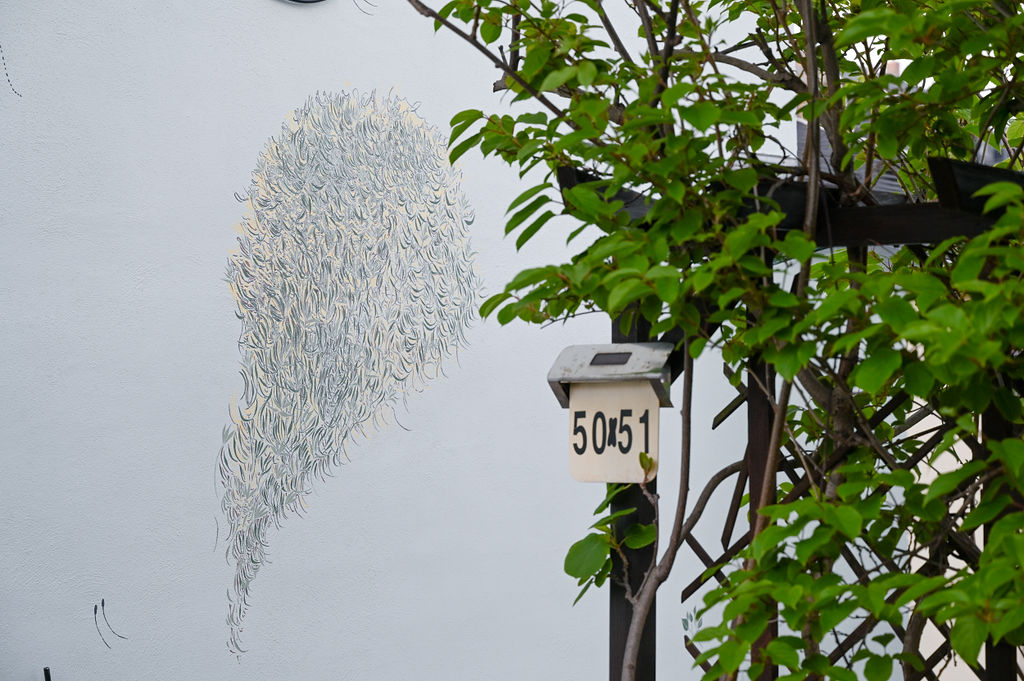
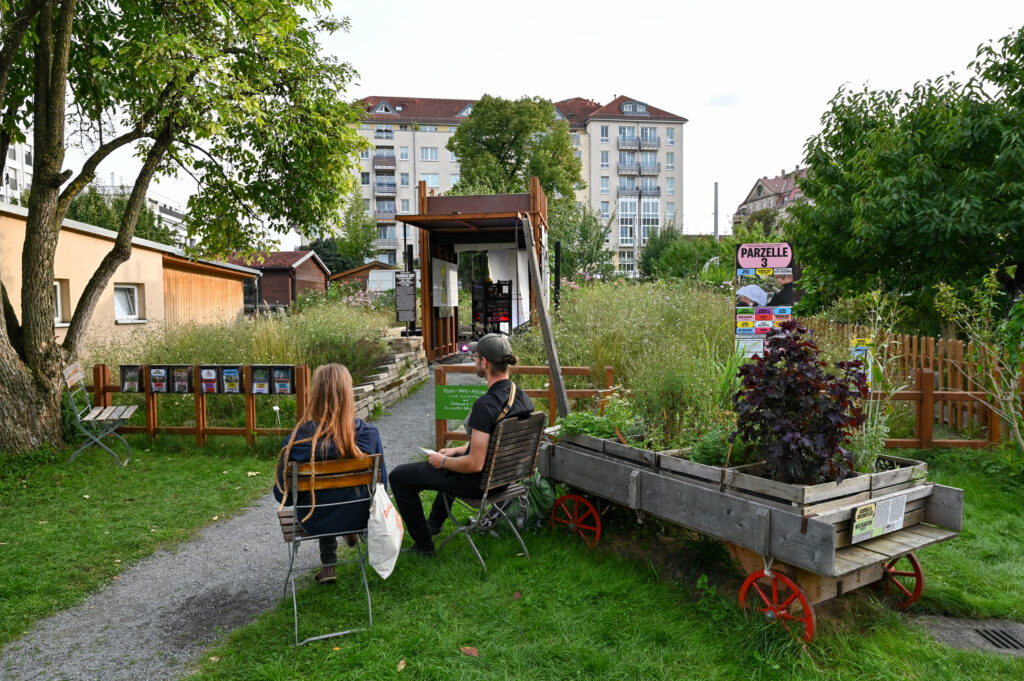
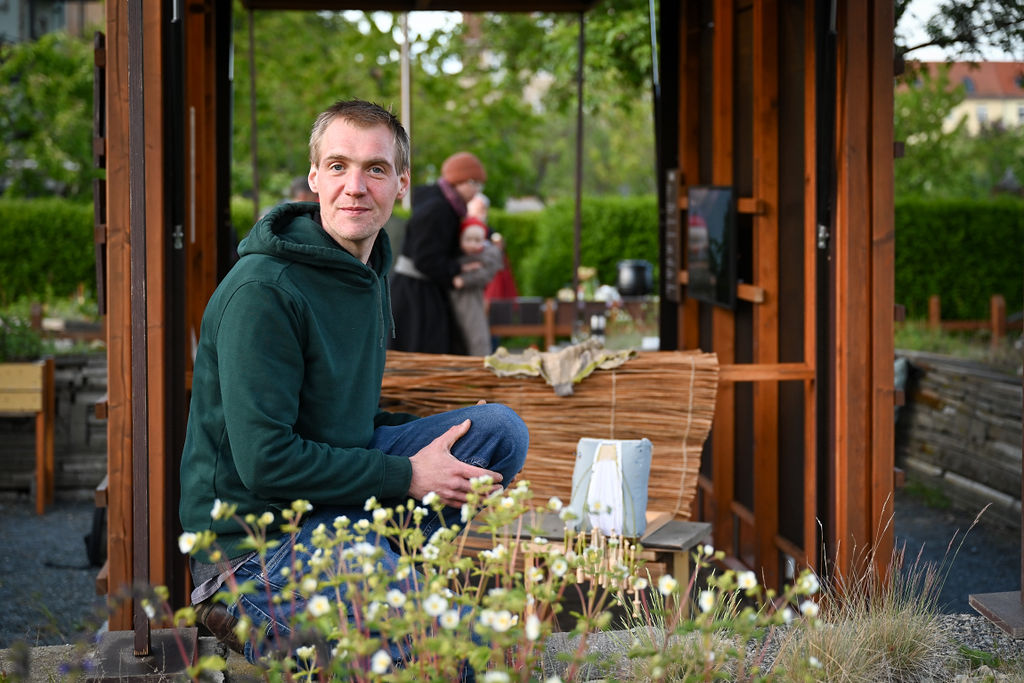
But the adult plants now are frustrated and need to take action: Herbicides and regular weeding by human farmers limit their habitat on the desolate pile, which is growing ever larger and depriving them of precious light.
In his botanical docu-fiction, Patrick Will shows, among other things, the plant’s last options for action. Although they represent a group of extraordinarily resilient plants, some of their fellow species have already been pushed back to such an extent that they are rarely found. During the three-month exhibition, living representatives will be on site at the allotment garden association and will be happy to enter into new collaborations there too.
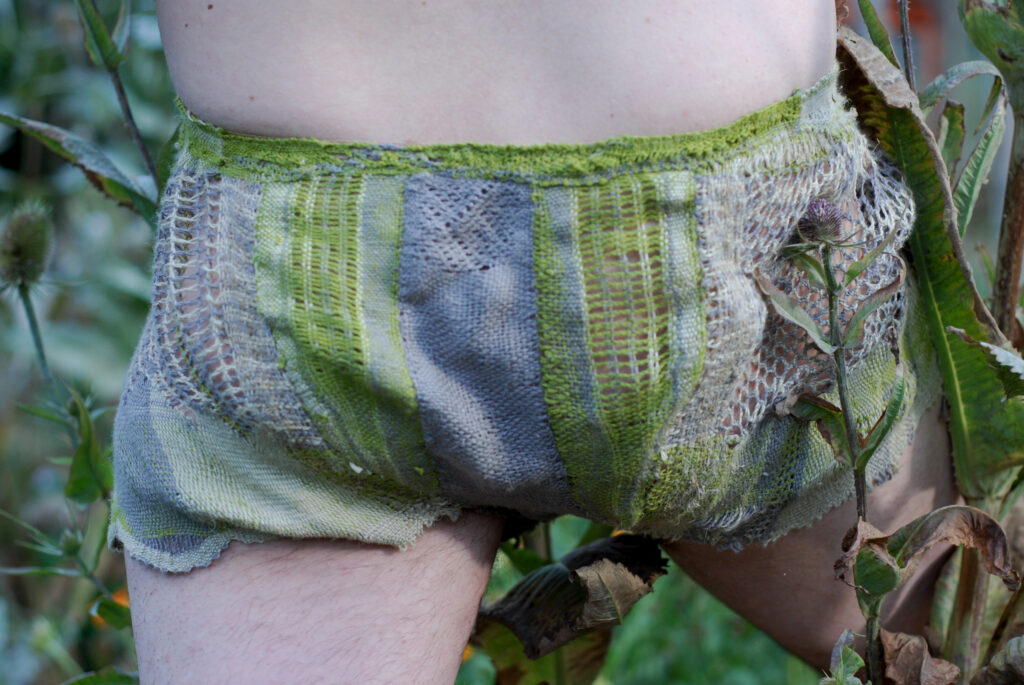

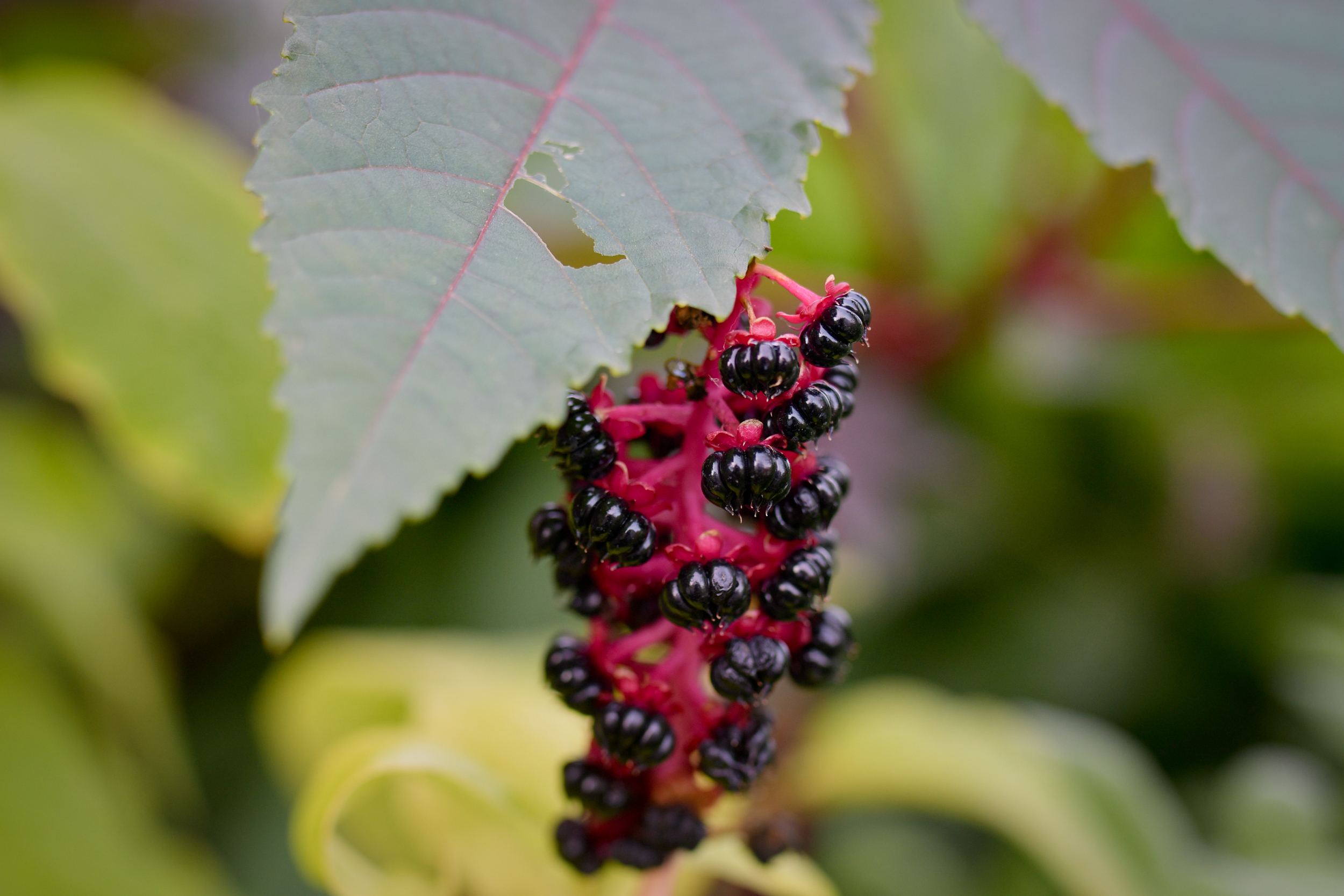
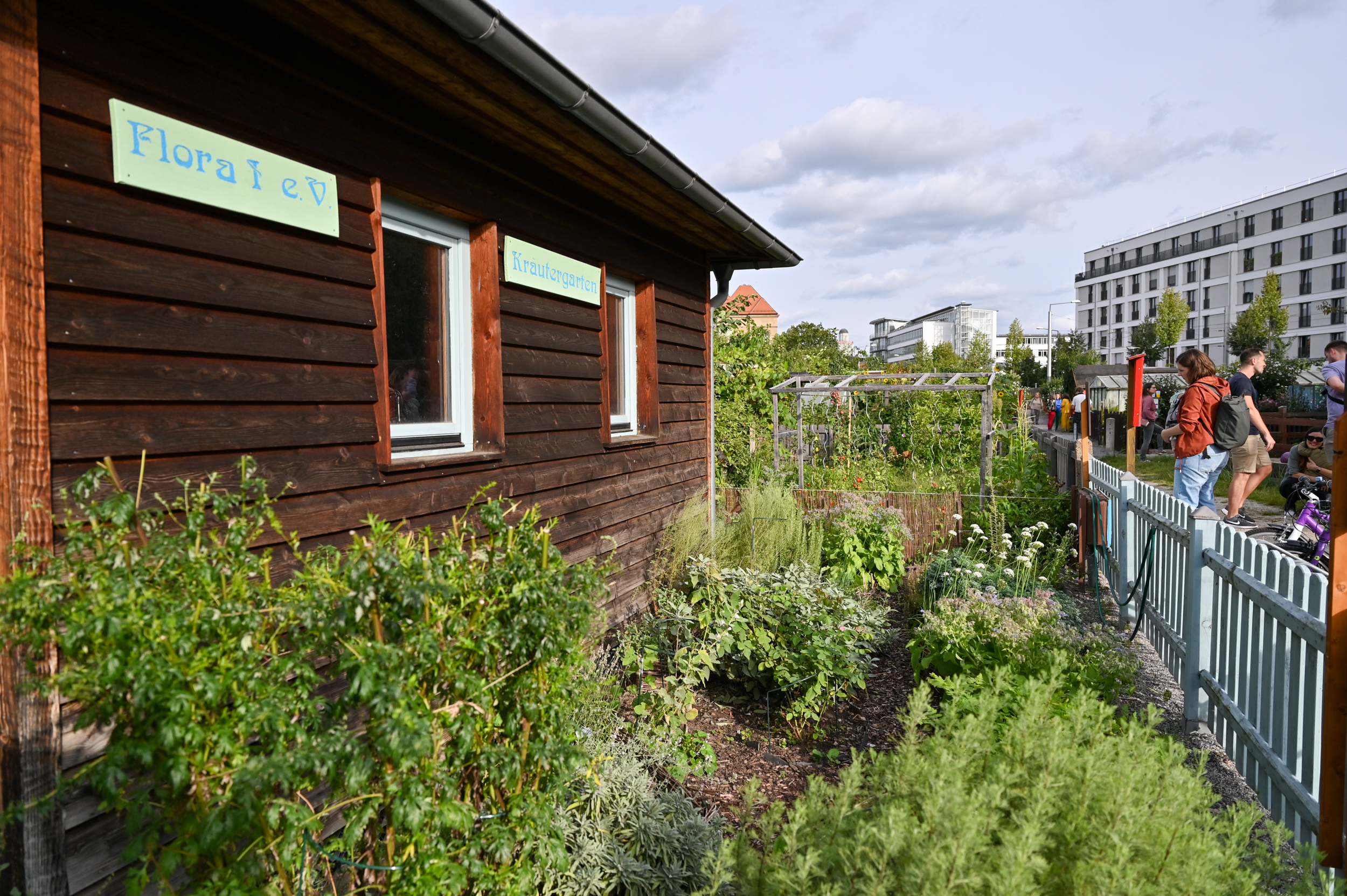
An Interlude is an artistic plant archive by Fatma Bucak in collaboration with Viennese botanist Bettina Bein-Lobmaier, which brings together 15 different plant species that have been used for different purposes throughout history: in small quantities to heal human diseases and injuries and in large quantities as poisonous substances.
The plant archive was part of the exhibition While the Dust Quickly Falls at Kunsthaus Dresden in summer 2022. The plants were shown there in industrial shelves as they are used in work and examination rooms, such as greenhouses or laboratories. As part of the Parzelle 3 project, the plants were relocated to the herb garden of Flora I, where they offer visitors a moment of pause from everyday life and metaphorical healing as they continue to grow and flourish as a medicinal plant garden.
Fatma Bucak, born in Turkey in 1984, lives and works in London and Turin. Borders, cultural heritage, the irreversibility of history and the displacement of people and memories are a central theme of her artistic projects.
Fatma Bucak's project, developed in collaboration with Kunsthaus Dresden, won the 2020 call for proposals of the Italian Council (9th Edition, 2020), a programme to promote contemporary Italian art worldwide, initiated by the Directorate-General for Contemporary Creativity of the Italian Ministry of Culture.
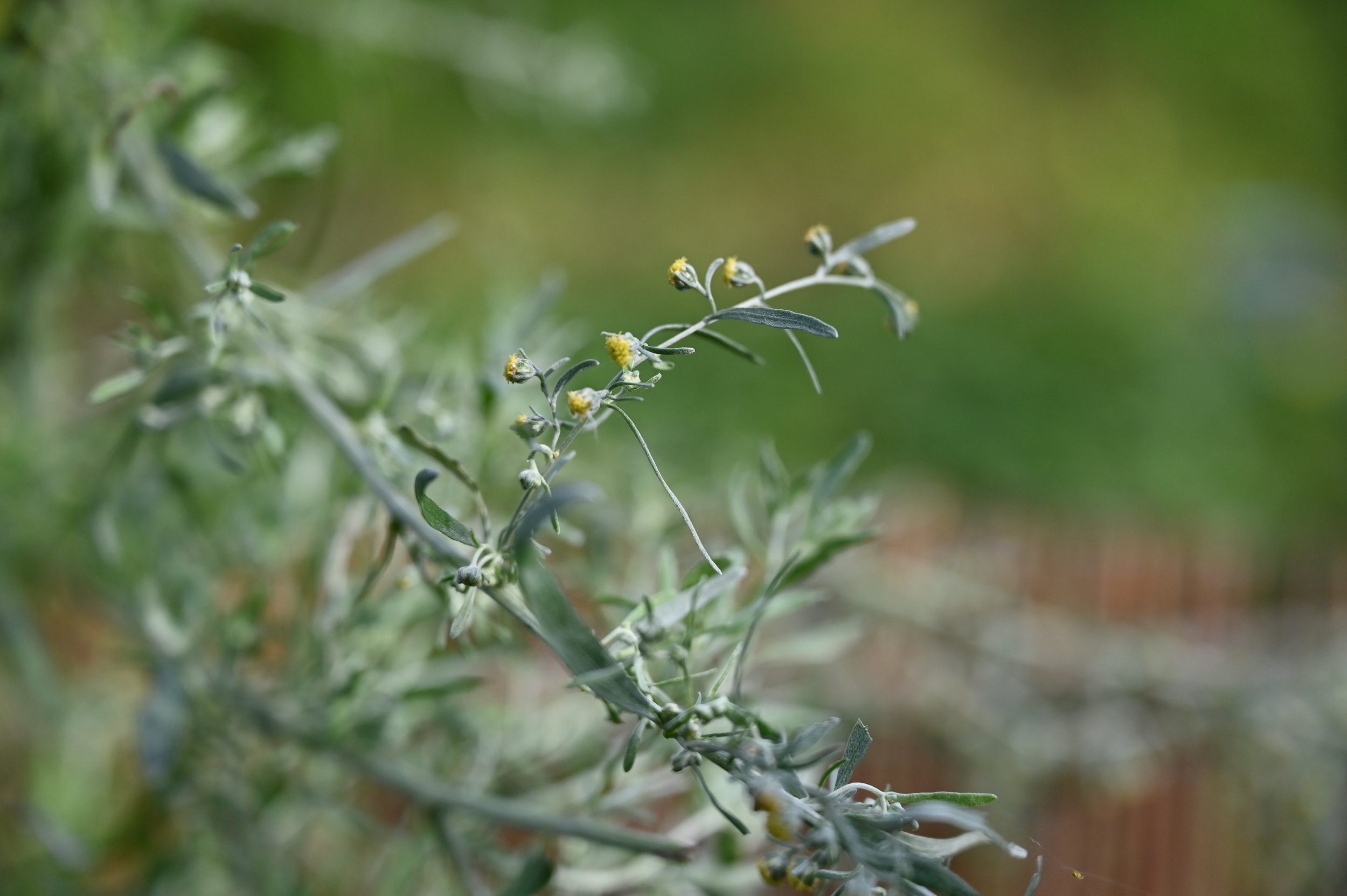

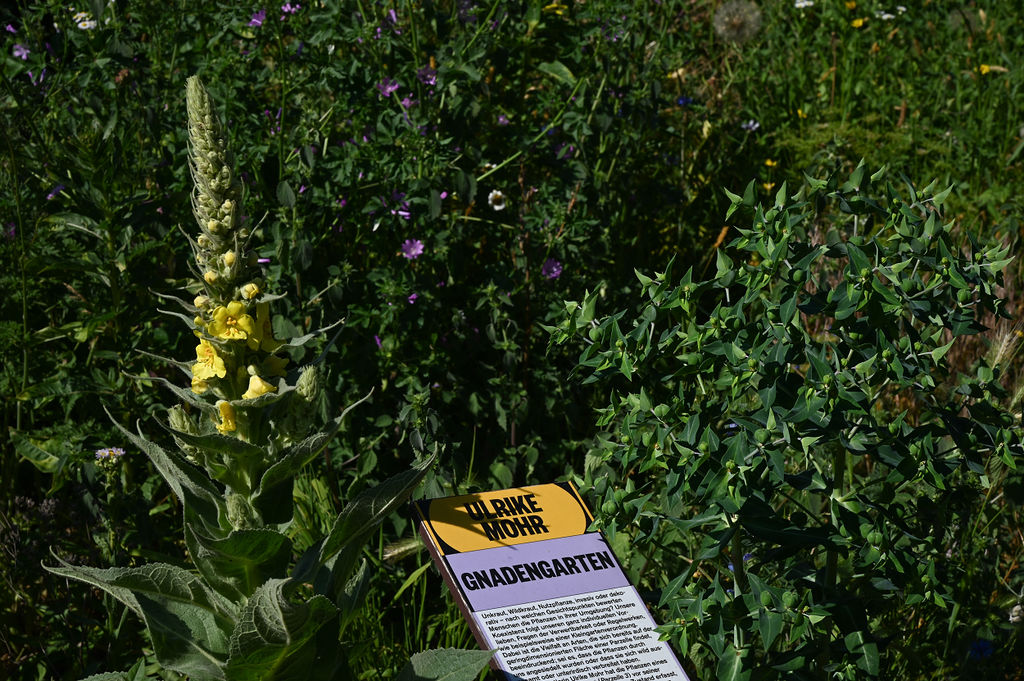
In the summer of 2020, the garden had turned into a wild, blooming poppy field with innumerable wild herbs. More than 50 different wild and cultivated plants were lifted in collaboration with the gardener Sabine Kroehs and the seeds of all annual plants were collected. The project can be viewed in a first phase before completion; in the coming days it will be completed by sowing and growth.
Ulrike Mohr (*1970 in Tuttlingen) is a fine artist. She studied at the weißensee academy of art berlin. In her works, she explores cultural techniques that have evolved from the coexistence of humans and nature.
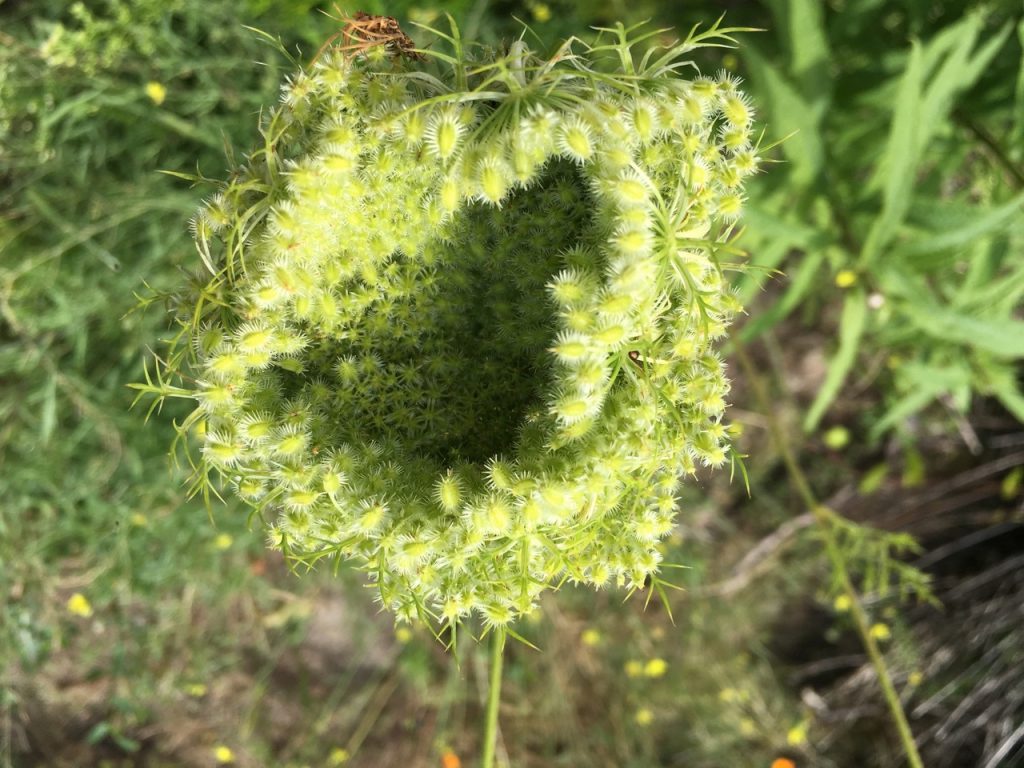
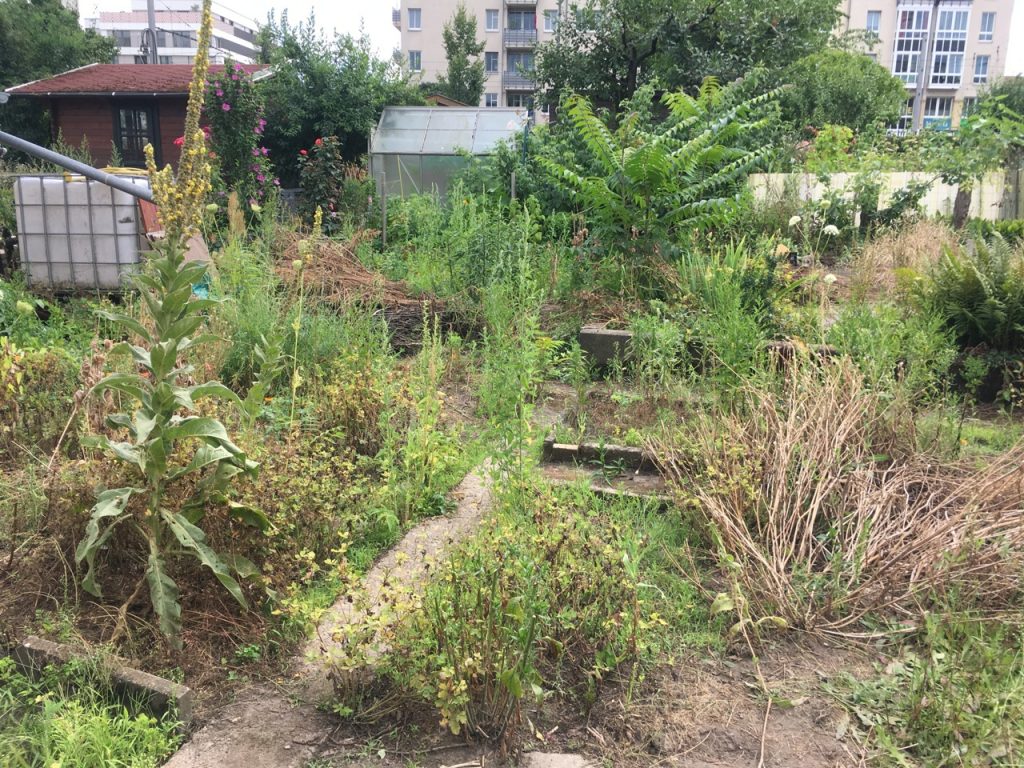

The conversations with allotment garden tenants dealt with expertise and views on the subject of gardens as well as the memories and future prospects of people from very different generations and backgrounds whose lives intersect in the allotment garden. While the individual experiences and perspectives, which span almost a century, are different, the garden forms a common space of experience. The conversations compiled by Sonya Schönberger were translated into typographic images in collaboration with designer Lea Maria Wittich – trees, flower beds and other motifs that characterise the garden.
In addition, the musical collage, which is the surprising result of a collaboration between the artist and sound artist Norbert Lang, processes the audio interviews from the garden into individual loops as well as a musical sound composition. The result is a multi-layered soundscape that invites reflection on the individual snapshot in relation to the cycles of the seasons and contemporary history. The composition Mein Garten, consisting of 13 tracks, can be heard in the garden via QR codes or on audio devices that can be borrowed from the El Horst restaurant. Mein Garten will also be released as a vinyl record, which can be obtained from the Kunsthaus.
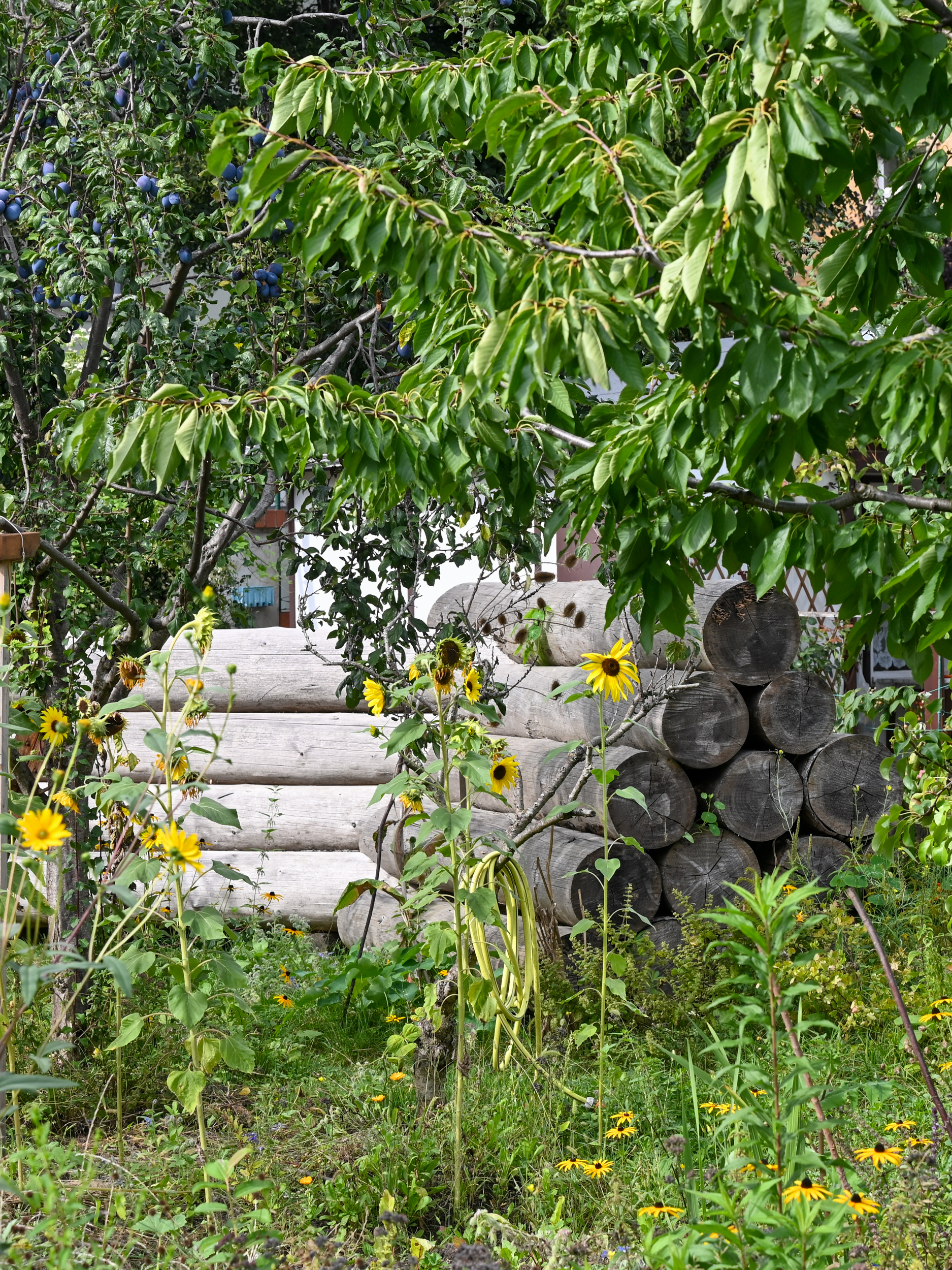

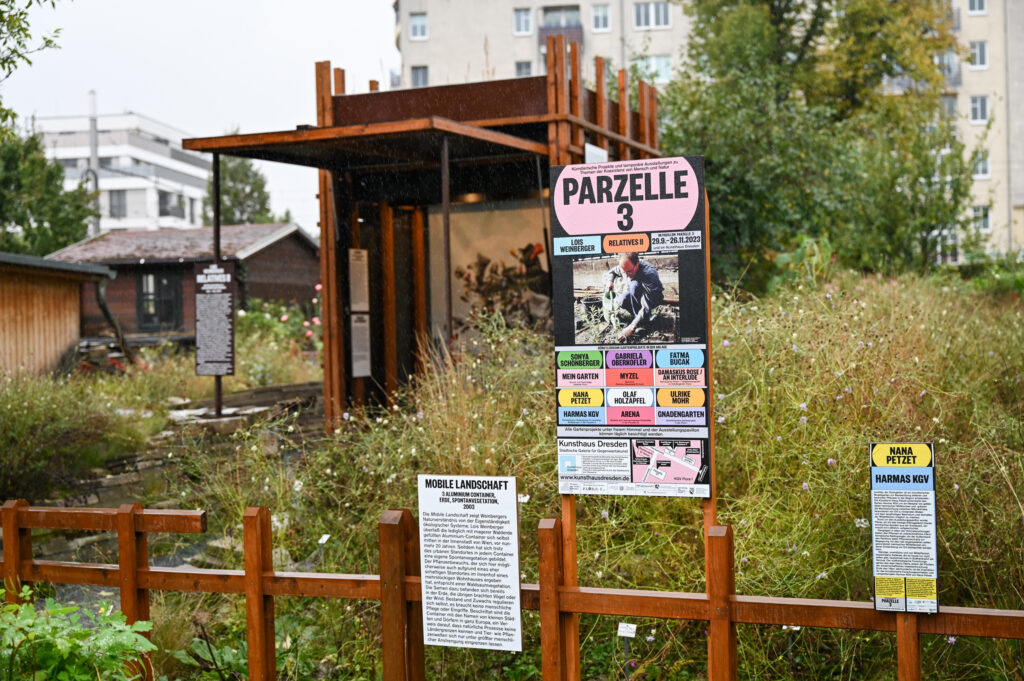
Slopes in all four directions offer the plants different microclimatic conditions. On the outer wall of the pavilion, plant portraits invite visitors to encounter the native wild plants that have become rare here, whose development can be observed on site. Stony, inhospitable areas overgrown with wild plants, which are rarely found today, are known as harmas in the south of France. The southern French research garden of Jean-Henry Fabre, one of the pioneers of scientific insect research at the end of the 19th century, is the inspiration for the artistic research and long-term project Harmas KGV by Nana Petzet.
Nana Petzet (*1962) is a visual artist. After studying at the Akademie der Bildenden Künste in Munich and the Hochschule für Bildende Künste in Hamburg, her work centres on the examination of different scientific disciplines and the special role of green spaces in the city.
